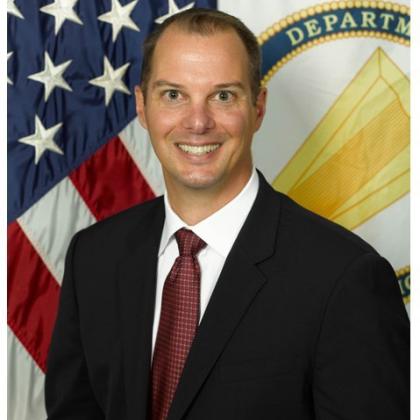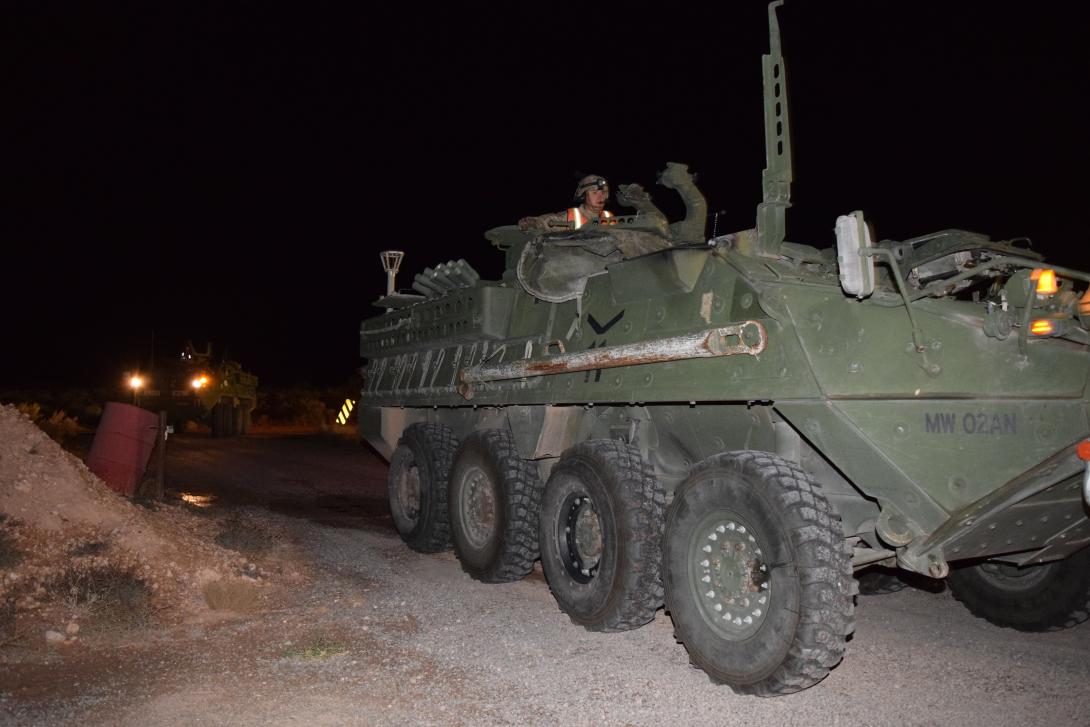It's About Time for Assured PNT
While every part of assured position, navigation and timing is critical to future U.S. Army missions, timing often seems to be overlooked. But not anymore, according to Michael Monteleone, director of the Assured Positioning, Navigation and Timing/Space (APNT/Space) Cross-Functional Team.
The APNT/Space Cross-Functional Team at Redstone Arsenal in Huntsville, Alabama, develops PNT, tactical space and navigation warfare requirements for the Army. The cross-functional team aims to connect soldiers to new technologies and capabilities sooner through technology demonstrations, prototyping and science and technology reviews, to inform the requirements development process. Such efforts allow officials to learn fast, mitigate risks early and achieve a higher level of technical readiness at an accelerated rate, according to an Army article. Monteleone, Army Futures Command’s only civilian cross-functional team director, assumed leadership of the team in May.
One focus in the short term is the upcoming Position, Navigation and Timing Exercise, commonly known as PNTAX. The exercise will be conducted as part of the Army’s Project Convergence, which will be included in the second phase of the service’s Global Defender exercises occurring April through September at military installations across the country. Global Defender 22 is designed to allow the Army to employ and assess multidomain concepts, demonstrate advanced future capabilities and test future tactics, techniques and procedures as part of the Army’s current and future readiness and modernization objectives. Project Convergence begins this month.
“PNTAX delivers a really great, rich learning environment for everything from government program offices to the science and technology community to the joint services and their organizations as well as industry, to be able to evaluate their capabilities in the presence of a realistic threat, and gain data, record data and understand and learn,” Monteleone says.
The PNT exercise will focus on two primary areas: traditional Global Positioning System navigation in an environment of denied access to electromagnetic spectrum and alternative navigation systems. “It could be anything—the P, the N or the T. But I’m of the belief that for the future environment, there’s certainly not going to be a silver bullet, and you certainly have to have a layered approach to the P, the N and especially the T,” Monteleone offers.
Asked why he emphasizes the timing element of PNT, Monteleone explains that many people equate PNT to the navigation software on their cellphones or Garmin devices and the screen telling them when to turn or change course. But for networks and other Army systems and platforms, timing is critical.
“I believe the T piece sometimes gets overshadowed from what we think about from a user equipment perspective, but the T is probably the biggest deal—from my perspective—in APNT,” he says. “We’re making sure we have increased emphasis. When I’m looking at investments, talking to industry, talking to the labs and centers, I’m very much interested in next-generation technologies that deliver very, very precise timing capabilities that we can incorporate into open architectures.”
He also stresses the importance of space-based technologies to be evaluated during Project Convergence and the ability to get data “down to the ground architecture and get soldiers’ eyes on it” and “understanding how fast information can come off of a sensor and then impact a scenario where there would be kinetic or nonkinetic effects.”

I’m very much interested in next-generation technologies that deliver very, very precise timing capabilities that we can incorporate into open architectures.
Monteleone praises his predecessor, William Nelson, and says he plans no major changes in direction, but he does tend to look a bit further into the future. “My focus is going to be the shift into what is next. I’m looking at the Army of 2030 or the Army of 2040.”
Emerging technologies, he suggests, will be important to those future warfighters, including quantum-enabled timing capabilities, atomic clocks and advanced inertial navigation systems. “You are seeing things in the quantum area that I think may be interesting in the future, so I want to make sure the Army is well postured as those mature,” he offers. “It’s not just quantum. There are a few other ways that people are getting very precise timing—atomic clocks and some of the other really interesting technologies we have available to us today.”
The cross-functional team director expresses interest in inertial navigation systems that are more sensitive and easier and less expensive to produce while also weighing less and using less power. “Just think of the amount of accelerometers and other things you have in your cellphone today.”
While many APNT technologies are being driven—no pun intended—by the commercial market for self-driving cars and drones to drop off packages, the Army can take advantage of those advances. “There’s a tremendous opportunity for industry to show us what they’re thinking about and how they’re solving some of these problems that are going to change how we live our day-to-day lives,” he says. “I’m very encouraged to see how … we could also inject some of the military requirements or understand when perhaps industry can solve problems very easily for us.”
The cross-functional team focuses primarily on three areas: the concepts of multidomain operations and joint all-domain operations, electronic warfare and tactical space. Those twin concepts of multidomain and joint all-domain operations drive the alignment of programmatics, resources, technology and requirements, he says.
Of particular interest in the electronic warfare arena is navigational warfare. “That’s really supporting both the defense of our own capabilities and protecting our own APNT capabilities, but then also denying the adversaries theirs or the reliability of theirs. We find that as being absolutely critical,” he says.
This focus on tactical space primarily ensures soldiers can access space-based capabilities, including communications, intelligence, surveillance and reconnaissance assets as well as additional PNT capabilities. “That’s covered everywhere from competition phase activities, peacetime activities, all the way to large-scale combat operations,” he states.
The team’s primary goal is to ensure soldiers receive “trusted and resilient information and that we can rely on that data for the P, the N and the T part of PNT,” he says. “This helps us defeat or provide resilience against the threat, anywhere from spoofing to jamming, denied, degraded environments—the traditional disconnected, denied, intermittent or limited bandwidth problem set.”
Monteleone has previously served at the Army’s Command, Control, Communications, Computers, Cyber, Intelligence, Surveillance and Reconnaissance (C5ISR) Center, where he directed the Engineering and Systems Integration Directorate. Prior to that, he led the C5ISR Center’s Space and Terrestrial Communications Directorate.
He has a lot of experience developing technologies for the Army’s network, and he notes that, like the network, APNT affects a wide array of systems. “On the network side, we talk about how the network touches everything. APNT also touches and influences and has to be integrated into every platform, capability, weapon system—you name it—in the United States Army and with our joint partners. PNT is like tactical radios. You need a lot of them.”





Comments